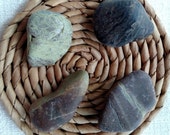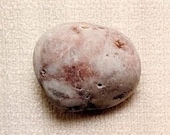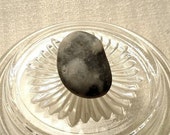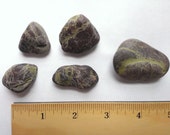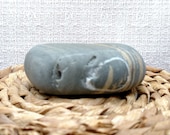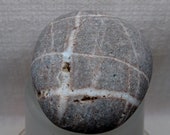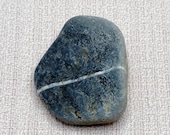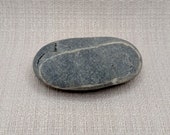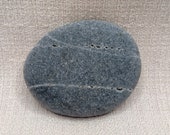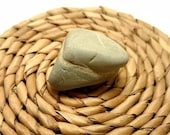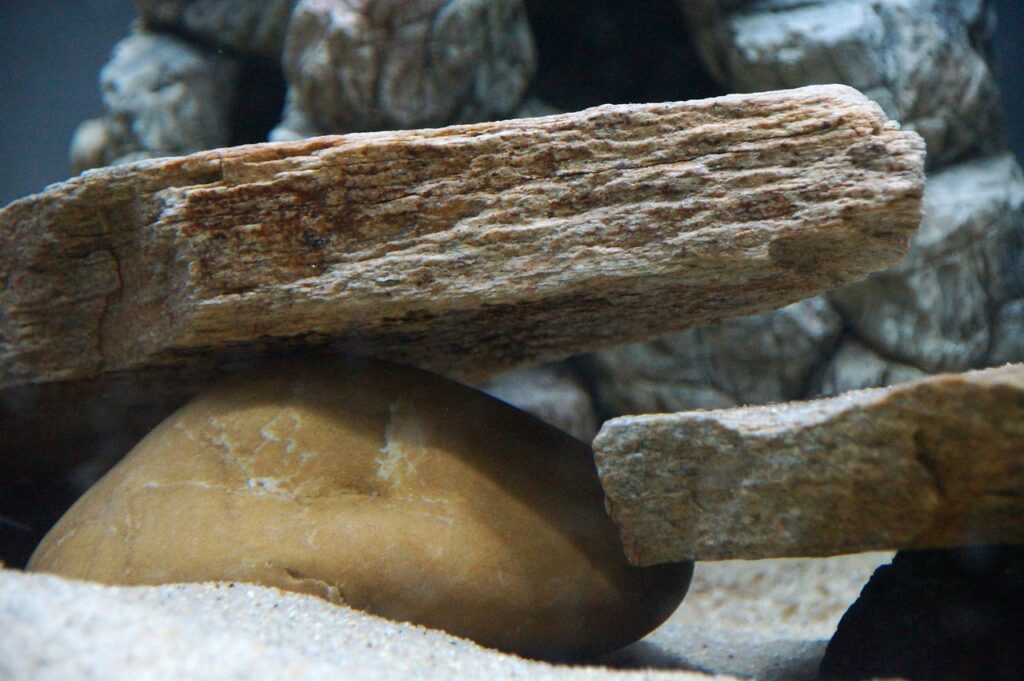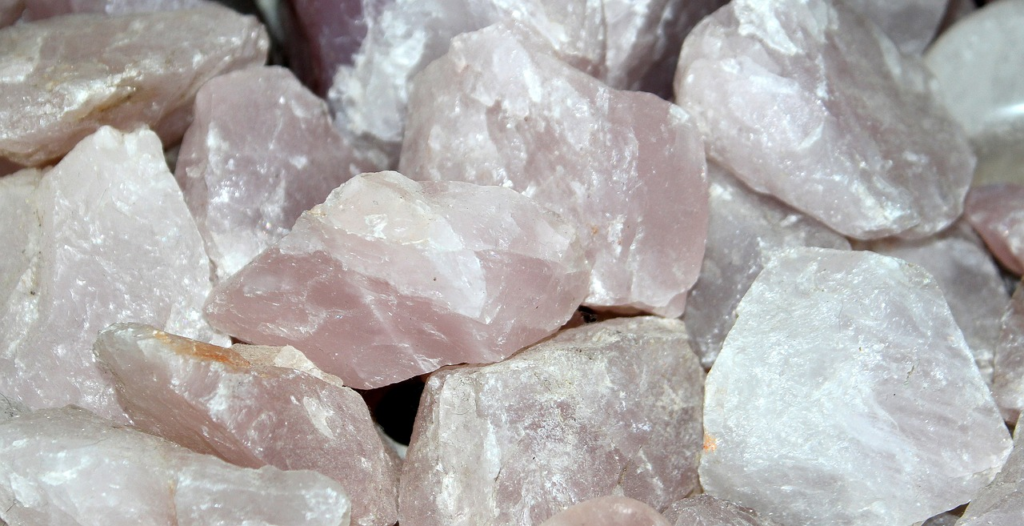Exploring Schist Rock Beach Stones in the Northeast
The Northeastern coastal regions of the United States are a geological treasure trove, rich in a wide variety of rock formations and unique beach stones. From the rocky shores of Maine to the sandy beaches of the Jersey Shore, this region offers an exceptional diversity of geological wonders. In this article, we embark on a journey to uncover the mystique of Schist Beach Stones, examining their geological origins, distinctive features, uses, and their place in the world of stone collecting.

Northeastern Geological Diversity
The Northeastern coastline is renowned for its geological diversity, a result of millions of years of earth-shaping processes. From the towering cliffs of Acadia National Park to the serene coves of Cape Cod, each coastal region tells a story of its geological history. This diversity is what makes this region a paradise for geologists and beachcombers alike.
Schist Beach Stones: Unique Treasures
While the Northeast boasts a wide array of rock types, Schist Beach Stones stand out as unique treasures. The beauty of schist lies in its intricate foliation – the alignment of its mineral grains – which often creates mesmerizing patterns. These stones have a distinct appearance that sets them apart from the more common beach stones, like granite or basalt.
In the sections that follow, we will delve into the formation of schist beach stones, their geological significance, potential uses, and preservation. We’ll also explore the myths and misconceptions surrounding schist and provide insights for those interested in collecting these captivating stones.
So, fasten your seatbelts and get ready for an enchanting journey through the world of Schist Beach Stones, the geological gems of the Northeastern shores.
Coastal Beach Stones
The Formation of Schist Beach Stones
How Schist Rocks Form
To appreciate the allure of Schist Beach Stones, one must first understand their intricate formation. Schist, a metamorphic rock, undergoes a complex process of change over millions of years. These rocks typically start as sedimentary or igneous rocks, subjected to immense heat and pressure beneath the Earth’s surface. These conditions cause profound transformations, turning them into the stunning schist stones we find on the shores of the Northeast.
From Humble Beginnings
Schist doesn’t begin life as the mesmerizing beach stone we adore. Instead, it often originates as shale or slate, sedimentary rocks compacted from ancient mud and silt. Alternatively, it can start as igneous rocks like granite or basalt, created by volcanic activity. As these precursor rocks are buried deep within the Earth’s crust, heat and pressure work their magic, altering their mineral structure.
The Transformation Process
Heat and pressure cause minerals in the rock to reorient themselves, aligning parallel to the direction of the greatest stress. This arrangement is known as foliation and is a defining characteristic of schist. The remarkable patterns and textures we admire on schist beach stones are the result of this metamorphic process.
How Are Schist Rocks Formed
Comparing Schist with Other Rock Types
Schist is just one member of the metamorphic rock family, and understanding its formation is best achieved in comparison with its relatives. Schist often takes the stage alongside rocks like gneiss and phyllite, all part of the greater metamorphic narrative. Unlike its counterparts, schist displays a unique balance of mineral composition and foliation, creating its distinctive charm. This balance makes it a captivating subject of study for geologists and a prized find for beachcombers.
Characteristics and Appearance of Schist Rocks
Schist boasts a spectrum of colors and patterns, making it a true spectacle for the eyes. It often reveals stunning layers, or foliation, which can shine with a silvery sheen in the sunlight. The minerals found in schist vary, but mica, garnet, and graphite are frequent residents, each adding their distinctive hues and textures.
What sets schist apart is its innate ability to split into thin sheets, a characteristic that has made it invaluable for countless practical applications throughout history, from building materials to roofing.
The Geological Significance of Schist
Balancing Rocks – Cairns
Why Schist Abounds
The prevalence of schist in the coastal areas of the Northeast is a geological marvel. This phenomenon can be attributed to the intricate history of the region. The Northeastern United States is steeped in geological complexity, making it a haven for rock enthusiasts and geologists alike. A journey through this region takes you on a voyage back in time, unveiling the Earth’s fascinating story etched in stone.
The Ancient Beginnings
The Northeast’s geological tapestry starts with the formation of the Appalachian Mountains. Over 480 million years ago, these magnificent peaks began their ascent, and through eons of tectonic shifts, volcanic eruptions, and the relentless wear of time, they bore the foundation for the schist beach stones we discover today.
Tales of Ancient Seas and Mountains
The story begins with ancient seas that once blanketed the region. The deposition of sediments over millions of years created thick layers of shale and siltstone. These layers, buried by the relentless force of geological processes, eventually underwent metamorphism, the transformation that turns sedimentary rocks into the remarkable schist beach stones.
Comparing Schist with Granite
To appreciate schist fully, it’s valuable to compare it with another prominent rock type – granite. While schist and granite share the same origins as igneous and sedimentary rocks, their subsequent journeys lead to vastly different outcomes.
A Battle of Minerals
Granite is an igneous rock, born from volcanic activity. Its composition primarily consists of quartz, mica, and feldspar minerals, resulting in a durable and often coarse-grained appearance. In contrast, schist, a metamorphic rock, boasts an array of minerals like mica, garnet, and graphite, which grant it its distinctive foliated texture.
Differences in Formation
Granite’s formation is marked by the cooling of molten rock, leading to a coarse-grained texture. Schist, on the other hand, undergoes a metamorphic transformation, where heat and pressure cause minerals to reorient, creating its unique foliation.
Practical Applications
Both schist and granite are cherished for their diverse practical applications. Granite’s durability and hardness make it an ideal choice for countertops and monuments. In contrast, schist’s innate ability to split into thin sheets, combined with its captivating patterns, has led to its use in roofing, building materials, and decorative art.
Utilizing Schist Beach Stones
Potential Uses of Schist Beach Stones
Schist beach stones are not just geological marvels; they are versatile in their applications. Their unique characteristics make them sought-after materials for a range of creative, practical, and artistic purposes.
1. Creative Landscaping: Schist stones can be artistically integrated into landscaping, adding a touch of natural elegance to gardens, walkways, or outdoor spaces. Their varying sizes and striking colors make them ideal for creating pathways, retaining walls, or ornamental features.
2. Decorative Art: Artists and craftsmen find schist appealing due to its aesthetic appeal. It’s often employed to craft sculptures, decorative pieces, and even jewelry. Its foliated texture and intricate patterns add a touch of sophistication to artistry.
3. Building Materials: Due to its durability and aesthetic charm, schist has been utilized as a building material for centuries. From facades to roofing, schist imparts a sense of timelessness to architectural designs.
4. Ground Cover: When schist is split into thin sheets, it can be employed as ground cover for gardens, pathways, or around trees. This use not only adds an earthy texture but also helps with weed control.
5. Fireplace Surrounds: The heat-resistant properties of schist make it an excellent choice for fireplace surrounds and hearths. It not only adds a rustic charm but also ensures the safety of the fireplace area.
6. Interior Design: Schist is often featured in interior design projects. Its unique patterns and earthy tones can be used for countertops, backsplashes, and flooring.
Can Schist Be Polished?
One common question about schist is whether it can be polished to achieve a smooth, shiny finish. Schist’s ability to take on a polished look depends on the specific variety of schist, as well as the tools and techniques used in the polishing process.
Polishability of Schist
Some types of schist are amenable to polishing due to their mineral composition and the way they fracture along foliations. Notably, mica-rich schists, like phyllite, can be polished to create surfaces with a sleek sheen.
Applications of Polished Schist
Polished schist can be employed for countertops, decorative accents, and even ornamental carvings. Its natural luster adds a touch of sophistication to architectural and artistic projects.
The Magnetic Properties of Schist
Schist, like many rocks, possesses magnetic properties. The extent of its magnetism, however, varies depending on its mineral content. The most common magnetic minerals found in schist include magnetite and pyrrhotite.
Applications of Magnetic Schist
Magnetic schist is sometimes utilized in geophysical surveys due to its magnetic properties. These surveys help identify subsurface structures and can be valuable in geological studies.
Schist’s Buoyancy
Whether schist beach stones float on water is a common query. The buoyancy of schist is influenced by its density, porosity, and mineral content. In general, schist is denser than water, which means that most schist stones tend to sink rather than float.
However, as with many natural materials, there can be exceptions. Less dense or highly porous schist varieties may exhibit some degree of buoyancy.
As we continue our journey through the world of schist beach stones, we will further explore the mysteries and possibilities that these remarkable geological treasures hold. The next sections will take us into the history, origins, and the unique characteristics of schist, providing a deeper understanding of its importance in the Northeastern coastal regions.
Conservation and Discovery
Proper Storage of Schist Stones
Preserving the allure and integrity of schist beach stones is essential for their sustained natural beauty and potential applications. Proper storage is key to ensuring these stones maintain their unique characteristics.
1. Dry Storage: Keeping schist stones dry is vital as excess moisture can lead to the growth of algae or lichens, potentially detracting from their appearance. Properly dried stones are better preserved for landscaping, artistic projects, or as collectibles.
2. Protection from Extreme Temperatures: Extreme temperature fluctuations can lead to the expansion and contraction of the stone, potentially causing cracks or fissures. Storing schist stones in an environment with moderate temperature and humidity levels can help prevent damage.
3. Stacking and Piling: When storing schist stones, it’s important to avoid excessive stacking or piling, which can lead to pressure-related damage. Providing cushioning between stones or placing them on supportive surfaces is advisable.
4. Avoidance of Weighty Loads: Placing heavy objects or materials on top of schist stones can result in fractures or deformations. It’s best to store them in a location where they won’t be subjected to heavy loads.
Regional Presence of Schist in the Northeast
Schist’s presence in the Northeastern coastal regions is no accident; it’s deeply rooted in the geological history of these areas. The Northeast is characterized by a complex geological landscape, and schist plays a significant role.
1. The Appalachian Mountains: The Appalachian Mountains, which extend through the Northeast, are rich in schist formations. These mountains are part of a vast mountain range that stretches from Alabama to Canada. In these ancient formations, you’ll find schist, a testament to the region’s geological history.
2. Coastal Areas: Schist’s presence is not confined to the mountainous interiors. In coastal regions, schist beach stones can be discovered along the shoreline, weathered and shaped by the actions of the sea.
Where to Find Schist Stones in Nature
Beachcombing and rockhounding are beloved pastimes in the Northeast. If you’re eager to discover schist beach stones in their natural habitat, here are some popular beachcombing spots to explore:
1. Rhode Island’s Shoreline: Rhode Island offers various rocky beaches, where you’re likely to come across schist beach stones. Moonstone Beach and Goosewing Beach are known for their unique stone treasures.
2. Massachusetts Coastal Gems: Massachusetts boasts numerous rocky shores, particularly along Cape Ann and Cape Cod. Wingaersheek Beach and Race Point Beach are ideal for rock enthusiasts.
3. Connecticut’s Coastal Beauty: Connecticut’s rocky coastline offers opportunities to discover schist beach stones. Areas like Hammonasset Beach State Park and Rocky Neck State Park are worth exploring.
Assessing the Value of Schist Beach Stones
The value of schist beach stones extends beyond the geological. Their worth is often determined by their uniqueness, beauty, and potential applications. While schist beach stones may not have a standardized market value like precious gemstones, their value can be significant to collectors, artists, and landscapers.
The worth of schist beach stones can vary based on:
1. Size: Larger, unbroken pieces of schist beach stones are often more valuable, especially for landscaping or artistic purposes.
2. Aesthetic Appeal: Stones with striking patterns, colors, or textures tend to be more sought-after, especially for decorative or artistic use.
3. Artistic or Functional Use: Schist stones that have been polished, carved, or integrated into artwork or landscaping projects often have higher value due to the craftsmanship involved.
In the Northeast, schist beach stones hold both intrinsic and artistic value. Whether you’re an enthusiast, artist, or collector, their unique charm is a testament to the geological richness of this region.
Artistic and Scientific Applications
Creative Uses of Schist Beach Stones
The versatility and captivating appearance of schist beach stones make them sought-after materials for artistic projects. Their unique features and color variations allow artists to unleash their creativity. Here are some artistic applications:
1. Mosaic Art: The distinct hues and textures of schist stones make them ideal for mosaic art. Artists can craft intricate designs on various surfaces, from tabletops to murals, using these stones.
2. Sculptures: Schist’s durability and aesthetic appeal lend themselves to sculpture. Artists can create stunning outdoor sculptures or intricate indoor pieces that showcase the beauty of this unique stone.
3. Landscaping: Schist beach stones are often used in landscaping for creating natural-looking pathways, garden borders, or even standalone garden features like decorative boulders.
4. Jewelry: Smaller, polished schist stones can be incorporated into unique jewelry designs. Their natural patterns make every piece distinctive.
Wishing Rocks
Understanding Schist’s Mineral Composition
Schist is a metamorphic rock characterized by a foliated structure, which means it contains minerals that align in thin layers. The primary minerals found in schist include:
1. Mica: Schist often contains mica minerals, such as biotite and muscovite. These minerals lend schist its characteristic shiny or glittery appearance.
2. Quartz: Quartz is a common component of schist. It provides hardness and durability to the rock.
3. Feldspar: Feldspar minerals, including plagioclase and orthoclase, can also be present in schist.
The specific mineral composition of schist can vary, resulting in different colors and textures. This variability is what makes schist beach stones intriguing for artistic and scientific exploration.
Thermal Properties of Schist Stones
One remarkable property of schist beach stones is their ability to retain heat. Due to their mineral composition and density, schist stones absorb and store heat, making them useful for applications like:
1. Heated Flooring: In architectural design, schist stones are sometimes used for heated flooring systems. These stones absorb and radiate warmth efficiently, adding a touch of luxury to interiors.
2. Saunas: Schist stones are excellent choices for sauna interiors. They store heat and gradually release it, creating a soothing and consistent sauna experience.
3. Outdoor Fireplaces: Schist’s ability to retain heat makes it valuable for outdoor fireplaces or fire pits, where it contributes to even heating.
Schist’s Transformation
Schist’s origin lies in the metamorphism of existing rocks, primarily shale or mudstone. The metamorphic process involves intense heat and pressure, which leads to the formation of schist. This transformation typically includes:
1. Recrystallization: Minerals within the parent rock recrystallize, forming new minerals, such as mica, that align themselves in parallel layers.
2. Formation of Foliation: The characteristic foliated structure, with minerals aligning in thin layers, develops during metamorphism.
3. Distinctive Texture: The orientation of minerals and the development of a foliated texture give schist its unique appearance.
This transformation is a geological wonder, producing the intriguing schist beach stones found along the Northeastern coast.
Unearthing the Past and Debunking Myths
The Historical Significance of Schist
Schist, with its unique qualities and striking appearance, has been revered throughout history. Tracing the historical significance of schist leads us on a journey through time:
1. Ancient Artistry: Ancient civilizations, including the Greeks and Romans, appreciated schist for its decorative potential. They used it for sculptures, mosaics, and architectural elements.
2. Architectural Marvels: Schist has left an indelible mark on some of history’s most iconic buildings. Notably, it adorns parts of the famous Canterbury Cathedral in England.
3. Heritage and Culture: Schist features prominently in indigenous cultures and traditions. It’s often associated with spiritual practices, such as carving talismans or ceremonial items.
4. Industrial Revolution: Schist played a crucial role during the Industrial Revolution when it was used for roofing material in many factories and warehouses.
Origins of Schist
Understanding the origins of schist entails exploring its geographical sources. The formation of schist is a complex process driven by heat and pressure. Regions with abundant schist deposits include:
1. Northeastern United States: Our focus, the Northeast, boasts significant schist deposits. Coastal areas, like Maine and Massachusetts, offer schist beach stones.
2. Scotland: The Scottish Highlands are renowned for schist formations, a result of the Caledonian Orogeny.
3. Wales: Schist is prevalent in parts of Wales, where it’s often used for roofing material.
4. New Zealand: The South Island of New Zealand holds extensive schist resources, appreciated for construction and landscaping.
Deciphering Crystal Size in Schist
Schist’s distinct texture is a result of its foliated structure, a feature that sets it apart from other rock types. Foliation in schist refers to the alignment of mineral grains in parallel layers, giving rise to its characteristic appearance. The size of crystals in schist can vary, influencing its overall texture. While schist typically has smaller crystals, occasionally, larger crystals may be found.
The mineral composition and crystal size contribute to schist’s aesthetic appeal, making it a favorite choice for artistic and architectural applications.
Schist vs. Salt: Debunking Common Misconceptions
One common misconception involves confusing schist, a type of metamorphic rock, with salt. In reality, these are vastly different substances.
Schist is a metamorphic rock formed through the alteration of pre-existing rocks like shale, primarily due to heat and pressure. It typically exhibits a foliated structure and features minerals such as mica and quartz.
Salt, on the other hand, is a chemical compound consisting of sodium and chlorine (NaCl). It’s an essential mineral used primarily for seasoning and food preservation.
While both schist and salt play crucial roles in different realms, it’s important to distinguish between these two distinct substances.
Exploration and Appreciation
Schist Beach Stones in the Northeast
Dive into the unique world of schist beach stones in the Northeastern coastal regions. Discover their intriguing presence and the geology that makes these stones so captivating.
Coastal Bounty: The Northeastern United States boasts a wealth of schist beach stones. Explore the stunning coastlines of states like Maine, Massachusetts, and New Hampshire to uncover these geological marvels.
Mystique of the Northeast: The Northeast’s geological history has provided the perfect conditions for the formation of schist beach stones. Ancient tectonic forces and distinctive geological features have led to their prevalence, enhancing the allure of the region’s shores.
A Beachcomber’s Paradise: Whether you’re an ardent beachcomber or simply drawn to the beauty of nature, the Northeast’s coastlines offer prime opportunities to find schist beach stones. Their unique appearance and historical significance make them a sought-after treasure.
Where to Buy Schist Stones
If you’re captivated by schist beach stones and eager to acquire them for various purposes, here are some practical suggestions:
Local Beachcombing: For those residing in or visiting the Northeast, a hands-on approach involves exploring local beaches to collect schist beach stones directly from their source.
Artisan Markets: Talented artisans and crafters often craft distinctive pieces of art and jewelry using schist beach stones. Seek out local artisan markets, craft fairs, and galleries for schist-based creations available for purchase.
Online Resources: In the digital age, you can easily access a wide array of geological specimens, including schist beach stones. Online marketplaces, rock shops, and specialized sellers provide a convenient avenue to purchase specific stones for your collection or creative projects.
Schist Beach Stones: A Collector’s Delight
Schist beach stones are a source of fascination for collectors due to their unique characteristics:
Unique Patterns and Colors: Schist’s foliated structure and mineral composition result in an intriguing variety of patterns and colors, making each schist beach stone a natural work of art.
Geological Significance: Collectors often appreciate the geological value of their treasures. Schist beach stones offer insights into the Earth’s complex history and the forces that forged these exceptional formations.
Versatile Use: Collectors can display individual stones, incorporate them into jewelry, or create captivating geological exhibits. The versatility of schist beach stones enhances their appeal among collectors.
In the diverse tapestry of geological wonders that grace the Northeastern coastal regions, Schist Beach Stones stand out as exceptional treasures. Our journey through this comprehensive guide has unveiled their captivating story, from formation to utilization, and their deep-rooted appeal to collectors and nature enthusiasts alike.
A Geological Marvel: These stones, formed over millennia through complex geological processes, bear witness to the Earth’s intricate history. Their unique patterns and colors reflect the dynamic forces that sculpted them, making them not just beach stones but natural works of art.
A Versatile Companion: Schist Beach Stones extend their utility far beyond the beach. As we’ve explored, their use in art, jewelry, landscaping, and even scientific research showcases their versatile nature. Their intrinsic heat-retention properties and mineral composition unlock a realm of creative possibilities.
A Journey of Discovery: For those with a heart for exploration, the Northeastern coastlines provide fertile ground. Whether you’re strolling along a serene beach or delving into artisan markets and online resources, the thrill of discovery awaits. The enchantment of finding your own Schist Beach Stone, laden with geological significance, is a rewarding experience.
A Call to Adventure: As we conclude our journey, we extend an invitation. Venture to the captivating beaches of the Northeast, where the allure of Schist Beach Stones beckons. Explore the coasts of Maine, Massachusetts, New Hampshire, and more, and discover the geological marvels that await your keen eye.
Connect with Nature: These stones encapsulate not only the history of the Earth but the beauty of the natural world. Their intricate patterns, unique mineral composition, and the tales they whisper are a reminder of the importance of preserving our natural landscapes.
In your quest for these natural wonders, we hope you find not just stones but stories, not just treasures but experiences, and not just the past, but a connection with the Earth. The enchanting beaches of the Northeast eagerly await your exploration. It’s time to embark on your own journey and let the world of Schist Beach Stones inspire you.

